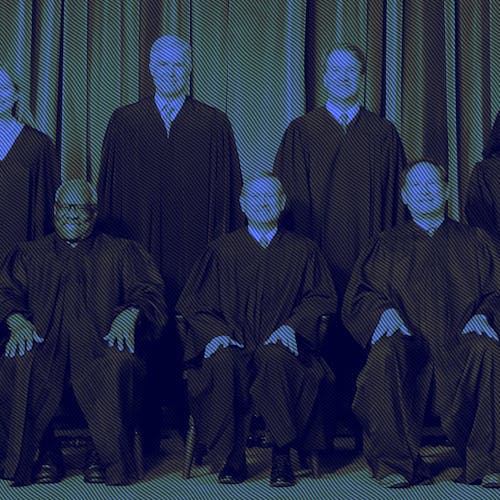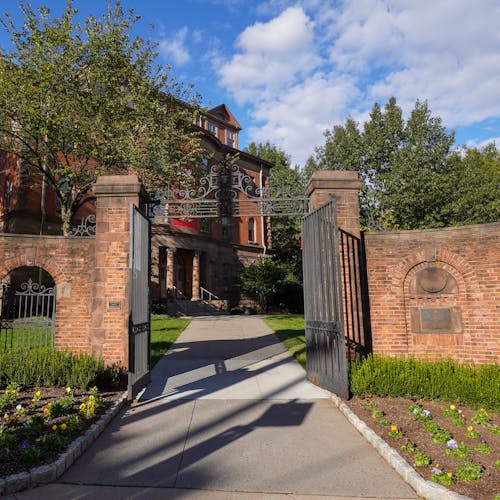JUSTICE: When education was tops

There was a time when the School of Education was largest and, in its openness to coeducation, most forward-looking unit of the University. Today, the Graduate School of Education building occupies a quiet corner of the College Ave campus, dwarfed by the new construction on Seminary Place and, more generally, by the massive complex of schools and departments that comprise the New Brunswick campus.
The reason had less to do Rutgers per se than with the history of the American high school. Public high schools emerged in the mid-19th century as the capstones of city public school systems — places where a small number of middle class and elites could get preparation for white collar work or college admissions. By the end of the 19th century, however, public high schools became a universal part of every public school system, and increasingly opened their doors to the children of all social classes. The result was an explosion in enrollment. Between 1890 and 1930 American public high school enrollment doubled every ten years, growing from 200,000 to 4.4 million students — a number that peaked at 6.6 million in 1942.
The growth of public high schools transformed the university in profound ways. Increasingly applicants came from public high schools, not private ones, which opened Rutgers to more student diversity by race, religion and social class. These high schools also offered a whole new field of employment for Rutgers students when they graduated, and more demand for graduate-level degrees for those who wished to advance their careers in the field.
Rutgers College offered a smattering of courses relevant to teaching since the late 19th century, but a full-fledged school of education did not emerge until 1923. When the school decided to offer extension classes for full-time teachers as well as expand its full-time degree offerings for on-campus students, enrollments soared. According to historian J. J. Chambliss, in the 1926-27 academic year, the School of Education enrolled 229 students on campus and another 928 in off-campus courses. In just four years those numbers grew to 2064 and 1653 respectively. Not all these students were full time students, nor would all graduate. But considering that the total on-campus enrollment at Rutgers was about 3000 students that year, these were very large numbers. More followed. By 1932 the School of Education awarded over 200 Bachelor’s degrees — more than any other unit. By 1934, its 80 Masters degrees also topped other units. Chambliss makes a second point that is worth repeating: increasingly, many of these students were women, including four who earned doctoral degrees (of 27 total) during the course of the 1930s — a time when women faced enormous barriers to graduate-level education.
Rutgers Historian Richard P. McCormick noted that this new public educational marketplace had a profound effect on Rutgers faculty as well. The School of Education shouldered these expanded enrollments with a faculty of seven members, compared to the university-wide total of about 70. But many of the courses were taught by faculty outside the School of Education, additional to their normal duties. Faculty valued the extra income — so much so that the university administration had to limit the number of extra courses that faculty could teach in the extension program to two per year.
The outbreak of World War II saw a sharp decline in enrollments in education and across the University, while the late 1940s saw a bounce back to a second bubble. By the late 1950s the School of Education’s enrollments steadied and held a secure position on campus, so much so that it earned a new building in 1963, which it still occupies today. But it never again enjoyed such a relatively prominent position within the university.
Today the (now Graduate) School of Education ranks among the most highly ranked schools of education in the country and enrolls around a thousand students.
The reasons for its relative decline in size compared to the rest of the university are many — competition from other colleges and universities, changing university priorities and the absorption of much of the demand for teacher education into other parts of the university. Finally, quite simply, the rest of the university grew up around it.
Those interested in further reading on this subject should consult longtime School of Education professor J. J. Chambliss’s paper, “The Study of Education at Rutgers, 1893-1998,” which maybe found in the collection of Alexander Library on the College Avenue campus.
Benjamin Justice is chair of the Department of Educational Theory, Policy and Administration in the Graduate School of Education. His column, "Past Imperfect: Remembering Rutgers' History," runs on alternate Mondays and is in collaboration with Paul Clemens and Carla Yanni.
YOUR VOICE | The Daily Targum welcomes submissions from all readers. Due to space limitations in our print newspaper, letters to the editor must not exceed 500 words. Guest columns and commentaries must be between 700 and 850 words. All authors must include their name, phone number, class year and college affiliation or department to be considered for publication. Please submit via email to oped@dailytargum.com by 4 p.m. to be considered for the following day’s publication. Columns, cartoons and letters do not necessarily reflect the views of the Targum Publishing Company or its staff.



